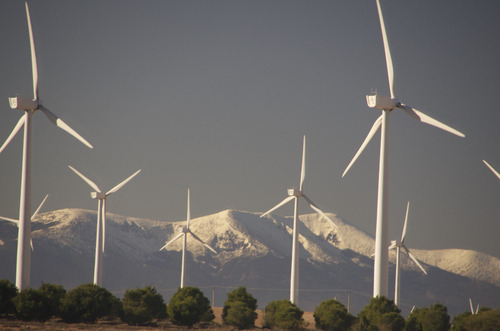Breaking with tradition, I ventured out of my mediterranean comfort zone in Catalunya and drove 12 hours north west to Galicia on the Atlantic Coast of Spain for Christmas shenanigans with Marta and her family and friends. Having lived in Catalunya for the last 10 years, nothing really could have prepared me for the change in tempo. I’m rather used to a slower pace of life on the Costa Brava and meeting Marta’s friends and relatives for the first time over the winter holidays was a whirlwind gastronomic and social experience that has left me utterly exhausted after 2 weeks away. I am very pleased to be home again, but somewhat sad to leave Galicia. This Spanish county, which I have never visited before, is so strange and yet so familiar to me with it’s Cornish-like Landscape and Celtic and Viking roots. I am absolutely enchanted with the friendliness of the people and their Joie de vivre. You can compare Galicia to many parts of the world, but put it all together, and Galicia is Galicia. Utterly unique…..
The 12 hour road trip… passing the mountains somewhere to the north of Madrid
Now that I am back, I have been explaining “Galicia” to my friends in Calonge and nearly always start by saying, “One of the things Galicia is famous for is….”. Well, one of those things is its quite shocking climate. I am unashamedly acclimatised to the mediterranean Coast and Galicia in the winter is rather nippy and very damp. Quite like England….. Luckily, we were spared the worst of the Galician weather. It didn’t rain once and although colder than I was used to, we were blessed with the most fantastic sunsets almost every day.
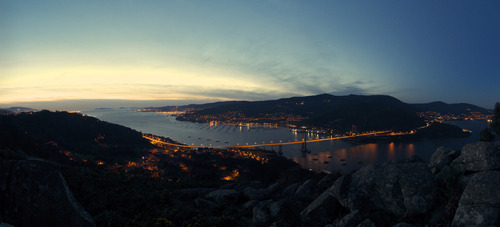
The Puente de Rande in the Ría de Vigo in between Pontevedra and Vigo.
For the majority of the trip, we based ourselves in Vigo on the West Coast in a fantastic apartment owned by some of Marta’s friends, Celeste and Ruben. I really liked Vigo; a small city of 350,000 situated on a hill overlooking the bay with a lively old town centre. Vigo reminds me so much of a cross between San Fransisco with its suspension bridge and Newfoundland with the Celtic flavour and possibly Vancouver with lots of inlets and sheltered bays. In the 16th Century, it was considered a fairly safe haven as it’s harbours and water inlets were easily defendable. The most famous assault on Vigo was by non other than Britain’s very own Sir Francis Drake between 1585 and 1589. I don’t think that he managed to take the town though.
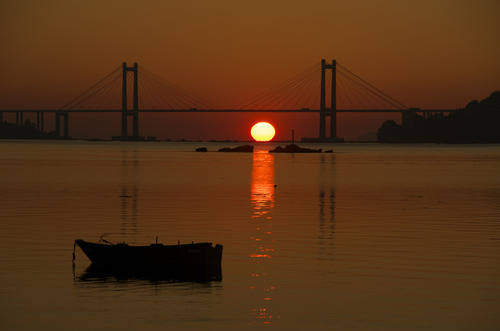
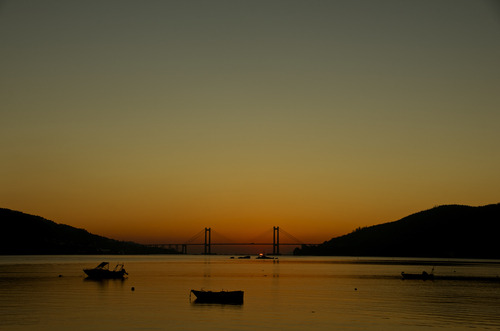
With all things Galician, you have to get your head around the quantity and quality here. Both with the food and the people. The seafood here is, quite frankly, outstanding and the people are equally impressive. Warm, friendly, open and very, very loud. I found the accent easy to understand and to my ears at least, almost Italian sounding…especially in the north. The rest of Spain says that when Galicians speak, they sing !
Marta had a long list of things for me to try on my inaugural trip to this part of Spain. These are “empanadas”. A small snackette that we had with a mid morning coffee. One based on a filling made from Tuna and the other based on Octopus. Price for two coffees and two huge slices of empanada….less than €5.00 :)
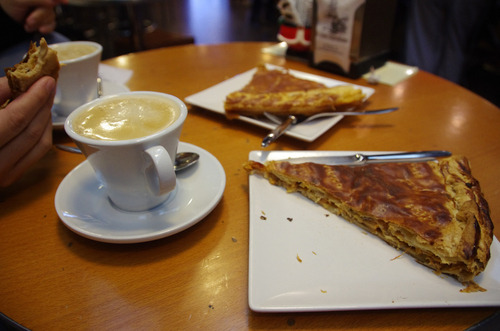
We didn’t have much time for sightseeing to be honest. My Christmas was a never-ending round of lunches, drinks, dinners and parties. I was given one day off to visit the town of Baiona just to the south of Vigo. This was the first landfall of the ships returning from the expedition led by Christopher Columbus (not my favourite historical character) to the New World and the occupants of this town were the first people to be aware of the existence of the Americas….Well, after the original settlers from Asia of course… and the vikings…. Probably….
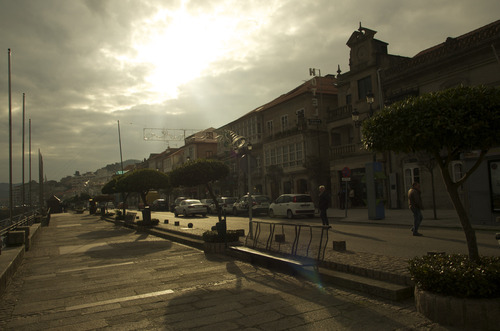
The seafront at Baiona. Galicia was first settled by the Celts and their influence can be easily seen not just in the various well preserved ruins dotted around the place, but by the customs of the people. The traditional musical instrument here is the “Gaita”, more familiar to me as the Bagpipe.
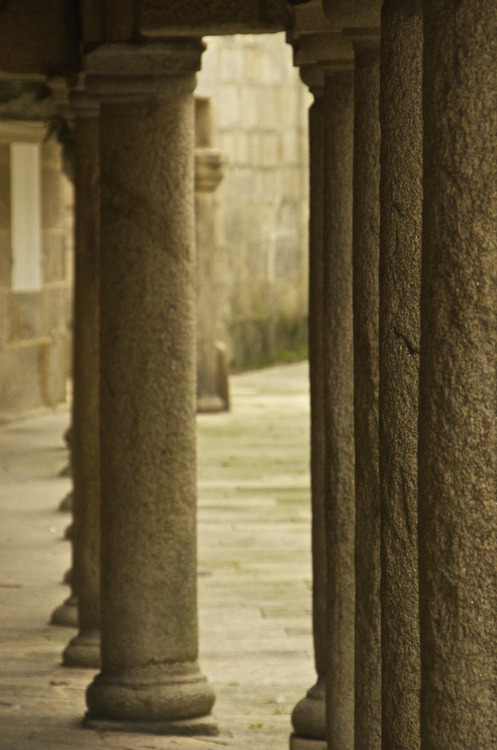
Classic architecture in Galicia.
Galicia was originally settled by the Celts after the Iron Age and inhabited the the Romans from the 1st Century BC to AD 500 before being reclaimed by the Celts after the fall of the Roman Empire. Much like Celtic Britain, the Galicians and the Romans had a difficult time together…. Maybe one of the reasons why the place feels so familiar to me is that a large proportion of the Celtic population of Britain emigrated by sea to Galicia during the Saxon and Viking invasions.
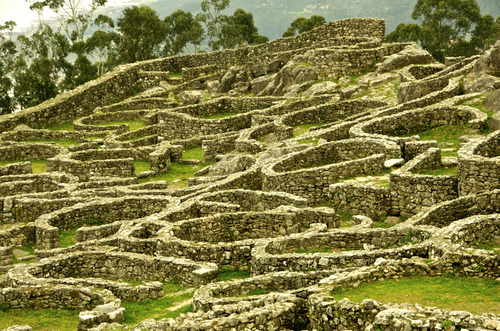
The Celtic ruins at Santa Tecla en A Guarda on the Spanish / Portuguese border.
Galicia was ruled by the Visigoths from the 4th to the 6th centuries and after the Catholicization of the Spanish Kings the biggest event to have influenced the balance of power in Northern Spain was the discovery of an Ark which allegedly contained the remains of an Apostle, a certain Saint James no less. After a church was built on the holy site, the arrival of a steady supply of faithful pilgrims insured an equally steady supply of wealth and power to the area.
Although Galicia is poetically known as the “Country of a thousand rivers” I think that it is probably most famous for it’s fantastic seafood. One of the most famous dishes, and my personal favourite is ”Polbo a Feira”

Mmmmm “Polbo a Feira”… Octopus with sweet Paprika and olive oil.
One of my least favourite dishes is “Percebes” or the Goose Necked Barnacle. These are prized here and regularly fetch €100 per kg at market. They grow on the rocky coastline along the north coast of Spain and west France and are quite dangerous to collect as those searching for them have to brave the fierce Atlantic waves and unforgiving rocks that they grow on and archaeological evidence suggests that they have been harvested by hand (as they still are) for the last 10,000 years. I have been told many times that I eat with my eyes…. true, true, true….these things are absolutely horrible…
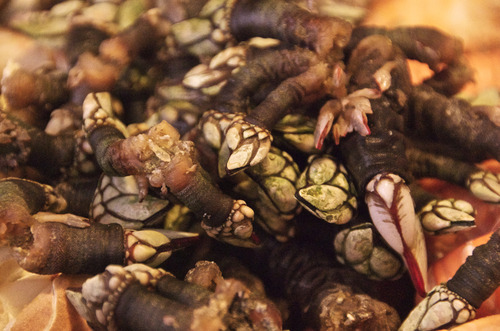
Percebes… the flavour of the sea :)
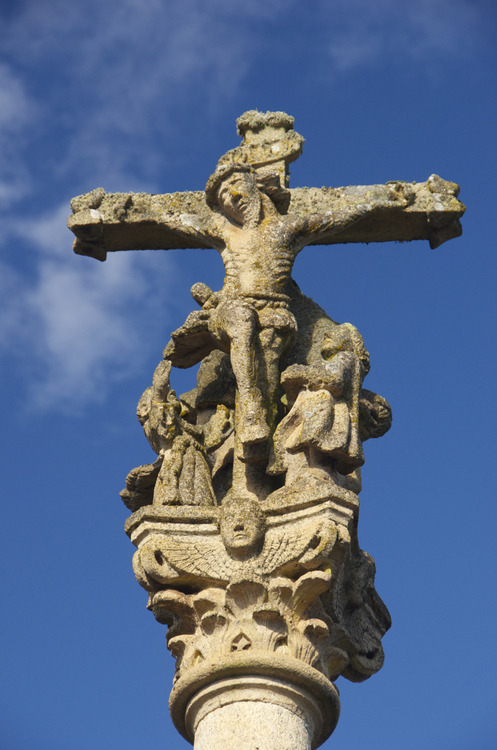
Un Cruceiro. These small monuments were erected as a place to pray before the community had the money to build a church. Sometimes they were built on Pagan sites to Christianize them. You see these dotted around the smaller villages, still very well preserved.
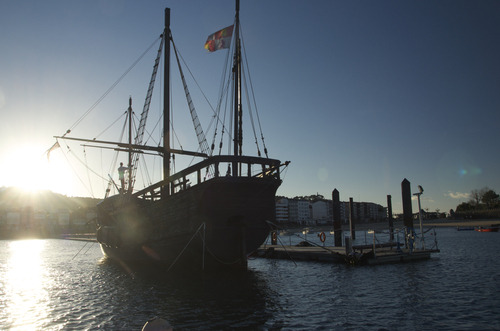
A replica of the boat “Carabela Pinta” from the America expedition on permanent display at Baiona harbour. The Captain, Martin Alonso Pinzón arrived in Baiona in March 1493 with the news of the New World.
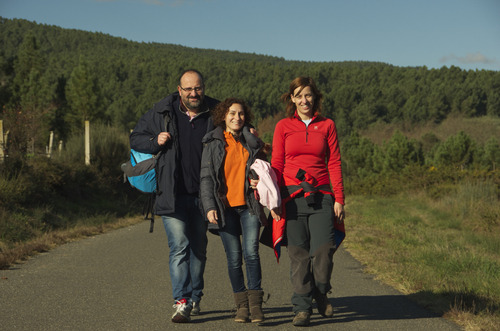
A typical crazy Galician Family….. Marta, her brother Carlos and sister-in-law Elena

A typical crazy Galician woman with a typical unadventurous Englishman walking along the beach in December at Corrubedo in the Dunas de Corrubedo National Park on the Rias Baixas coastline.

A Panorama of the fantastic beach at Corrubedo.
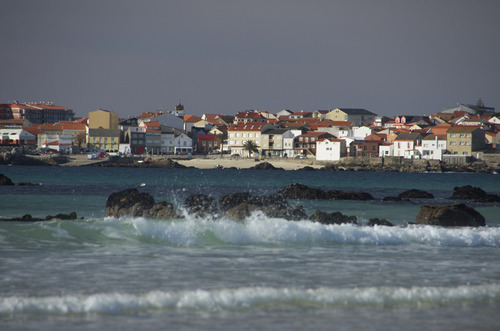
The fishing village of Corrubedo.
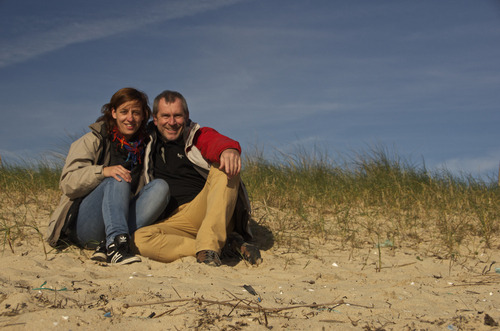
Not a bad way to spend Christmas….
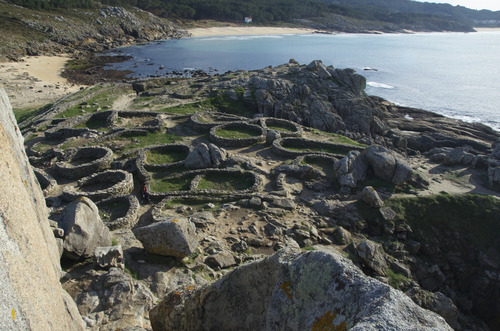
The Celtic ruins at Castro Baroña.
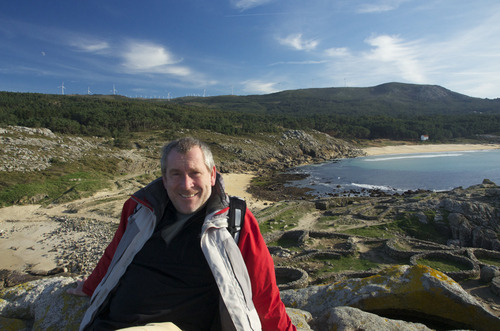
Hanging on for dear life.
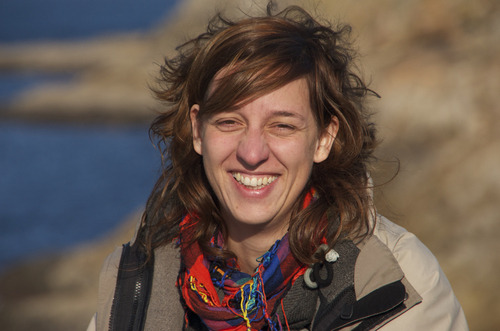
Marta enjoying my vertigo.
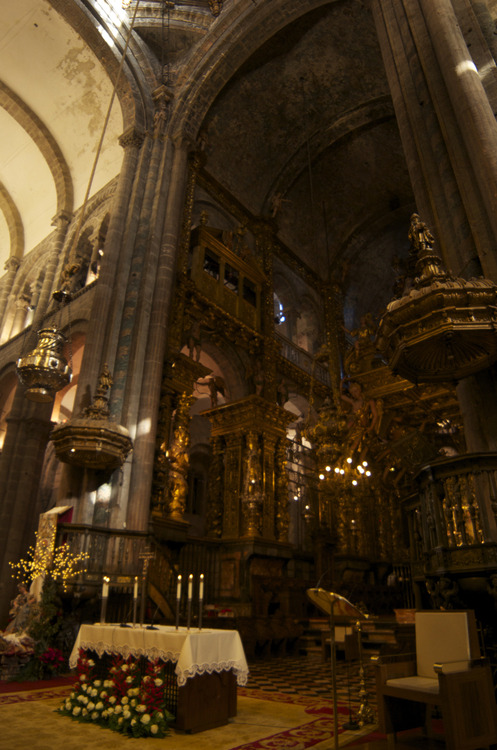
The Cathedral in Santiago de Compostela is named after Saint James the Great (patron saint of Gardeners apparently). This is the final destination of “the way of St James”, a leading Catholic pilgrimage from all over Europe. On the left hand side of the photo you can see the huge “Botafumeiro” installed in 1604 which (not being religious I have to copy this from another website) is “a famous thurible used for burning incense. It is one of the largest Censers in the world weighing 80 kg and measuring 1.60 mts in height suspended 21 mts from the ceiling. It is loaded with 40 kgs of charcoal and incense lifted into position by 8 people and has a 65 mt arc when at full swing”. Look on YouTube for video footage of a complete lack of health and safety at work…
There have been a number of accidents over the years, most notoriously during a visit by Princess Catherine of Aragon (of Henry VIII fame and presumably before he chopped her head off) when the Botafumeiro flew out of the Platerias high window in 1499.
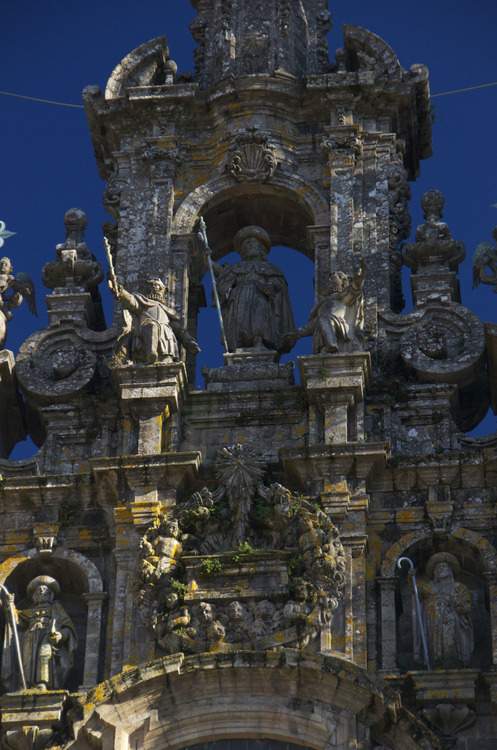
The exterior of the Cathedral in Santiago de Compostela.
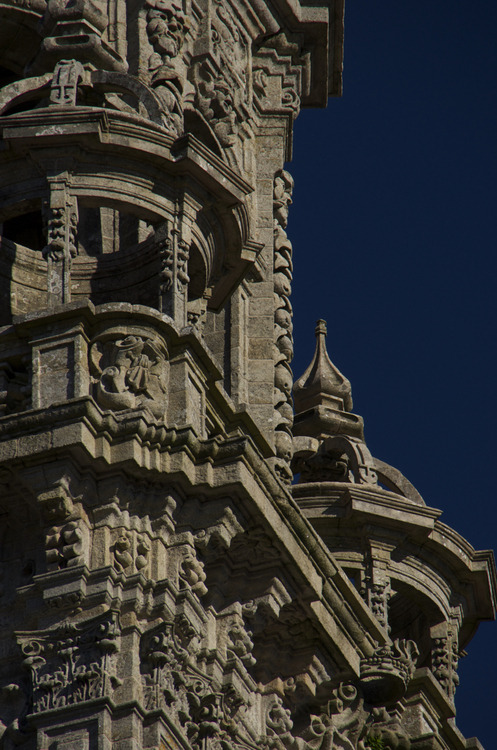
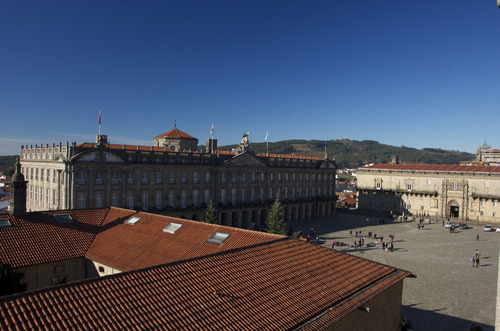
The view from the cathedral over the council offices and the holy hotel.
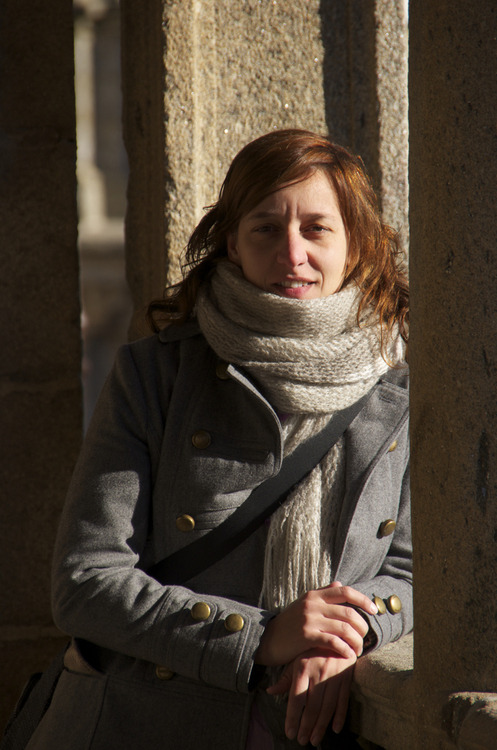
Marta enjoying my immersion into religious territory.
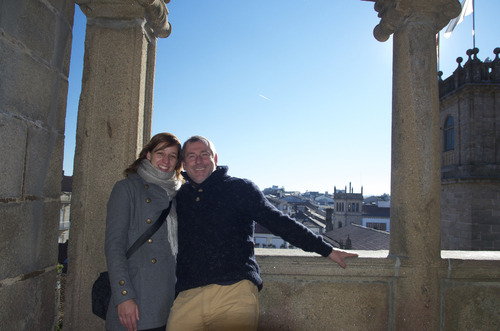
Marta and me suffering with the vertigo.
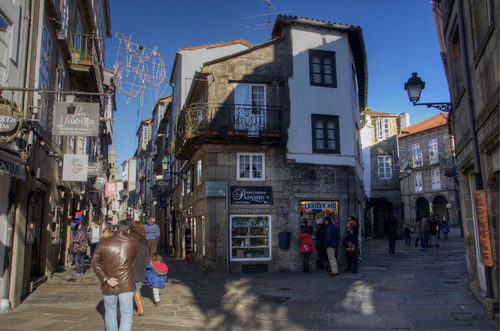
One of the beautiful side streets in the old town in Santiago de Compostela.
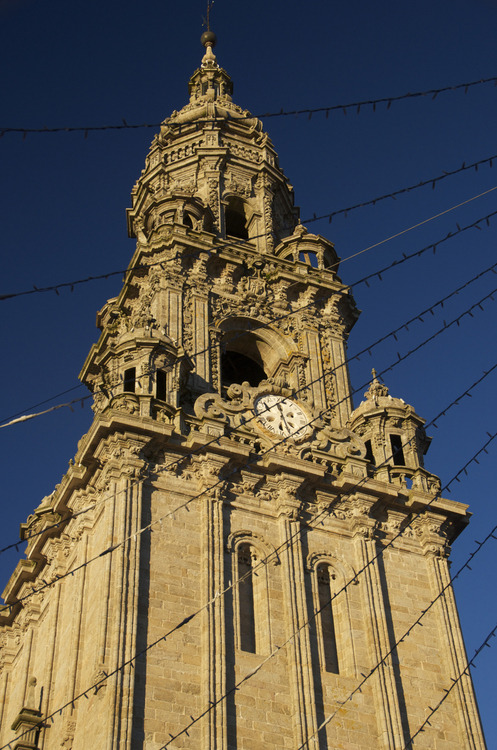
The Cathedral clock tower.
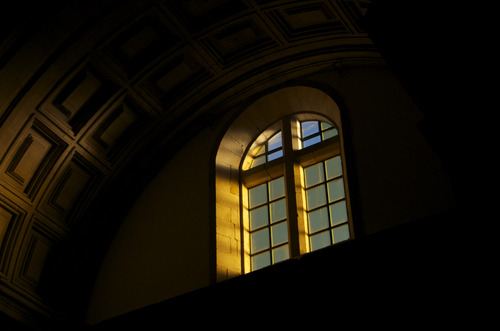
A Capilla inside the Cathedral.
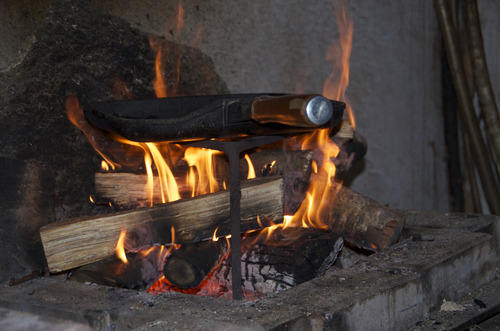
At the end of our stay in Vigo, we visited some of her friends in Amido, a small village made up of just a handful of old stone houses in A Coruña in the north of Galicia. This was a traditional Galician house built in the early 20th century in rural Galica and untouched by modern life. Marco was born in this house and it is still used as a weekend retreat. I liked it there…. quiet, lots of land to grow his own food and surrounded by nature. No WIFI though :(
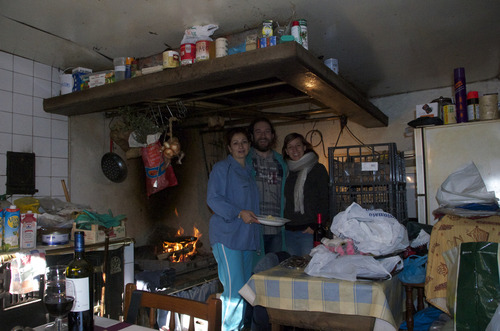
Marco and Sese. This room is called a “Lareira” a typical place to have the fireplace… Somewhere to heat the house, cook the food, smoke chorizos hanging above and generally “hang out”. There was also an old stone bread oven and behind the wall, a small door to throw kitchen waste to the pigs that lived behind the house. I loved it.
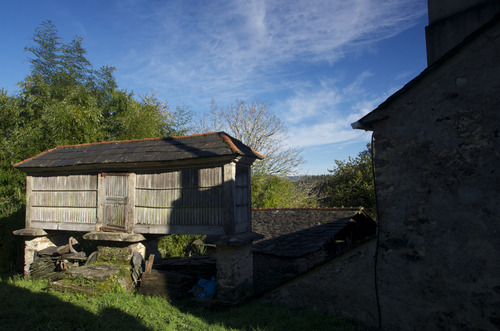
This is probably the most famous icons of Galicia. “O Hórreo”, a granary built of wood or stone, raised from the ground by pilars and orientated to take advantage of local winds to dry maize. The large flat stones on the pillars and designed as such so that rodents can’t get access to the granary. At the end of the day, a trip to the coast and another fantastic sunset.
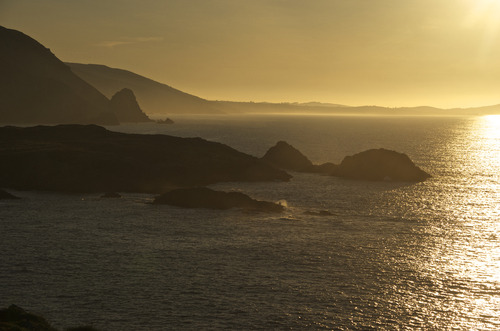
The Costa de Ferrol at El Faro de Meiras.

Sunset at Praia de Valdoviño.

Crazy Galicians + one.
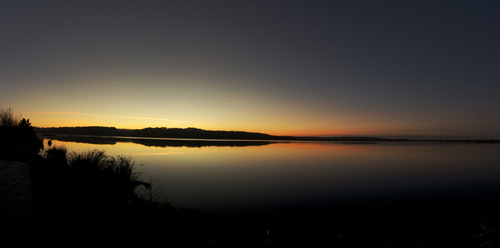
The Lagoa da Frouxeira in Valdoviño.
So, to sum it up, a genuinely enjoyable experience for me. I can completely understand (figuratively and literally speaking) where Marta is coming from now. Having lived both in Andalusia and Catalunya for many years, I find that Galicia is unique and unlike anything else that I have experienced in Spain before. The people are (quite rightly) immensely proud of their own culture and heritage but they manage to incorporate this within a Spanish identity too. I will miss the seafood (Centollo, Boy, Cigales, Camarons, Navajas, Vieiras and Zamburiñas) but not the Percebes though. No, these you can keep….
